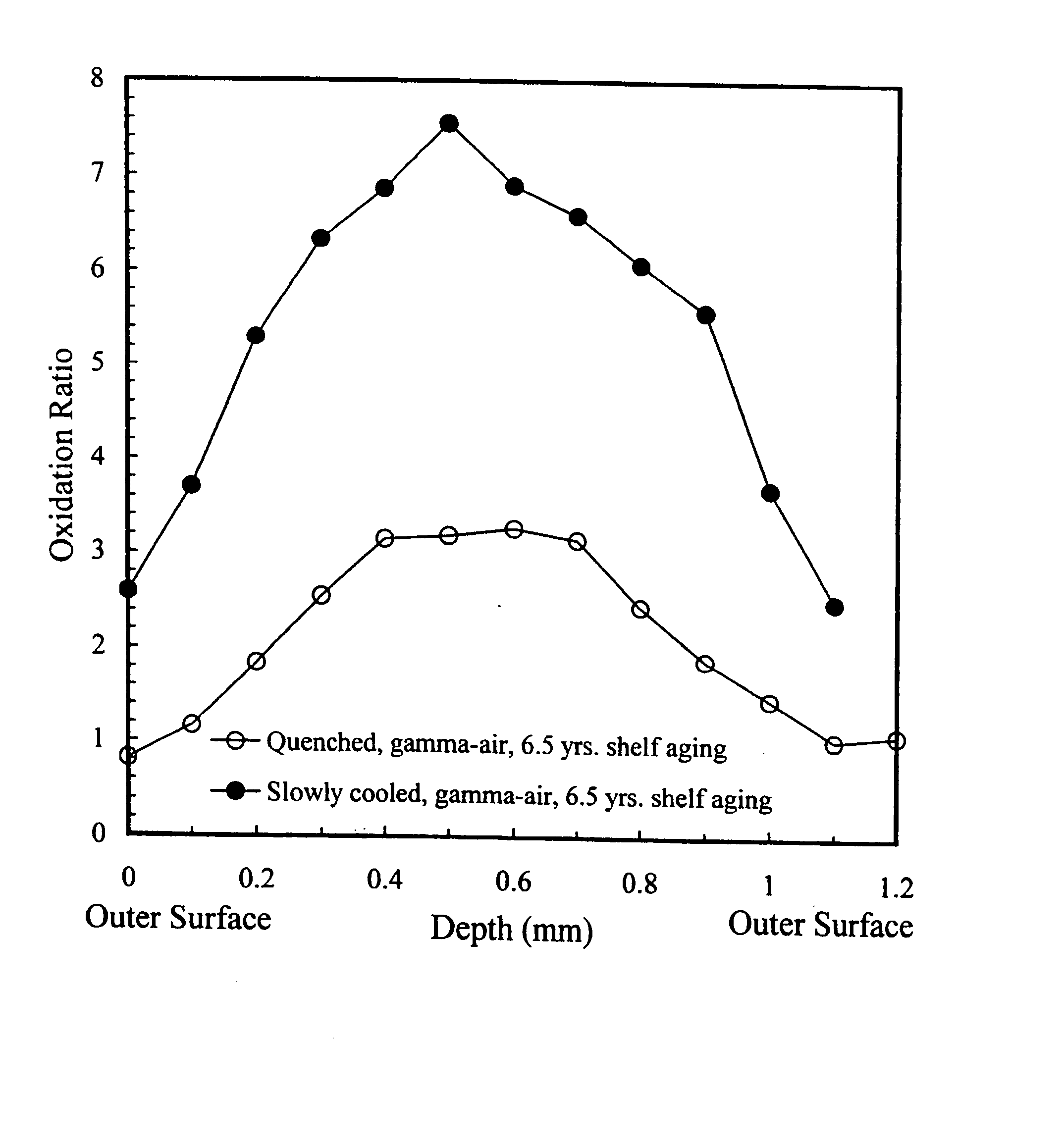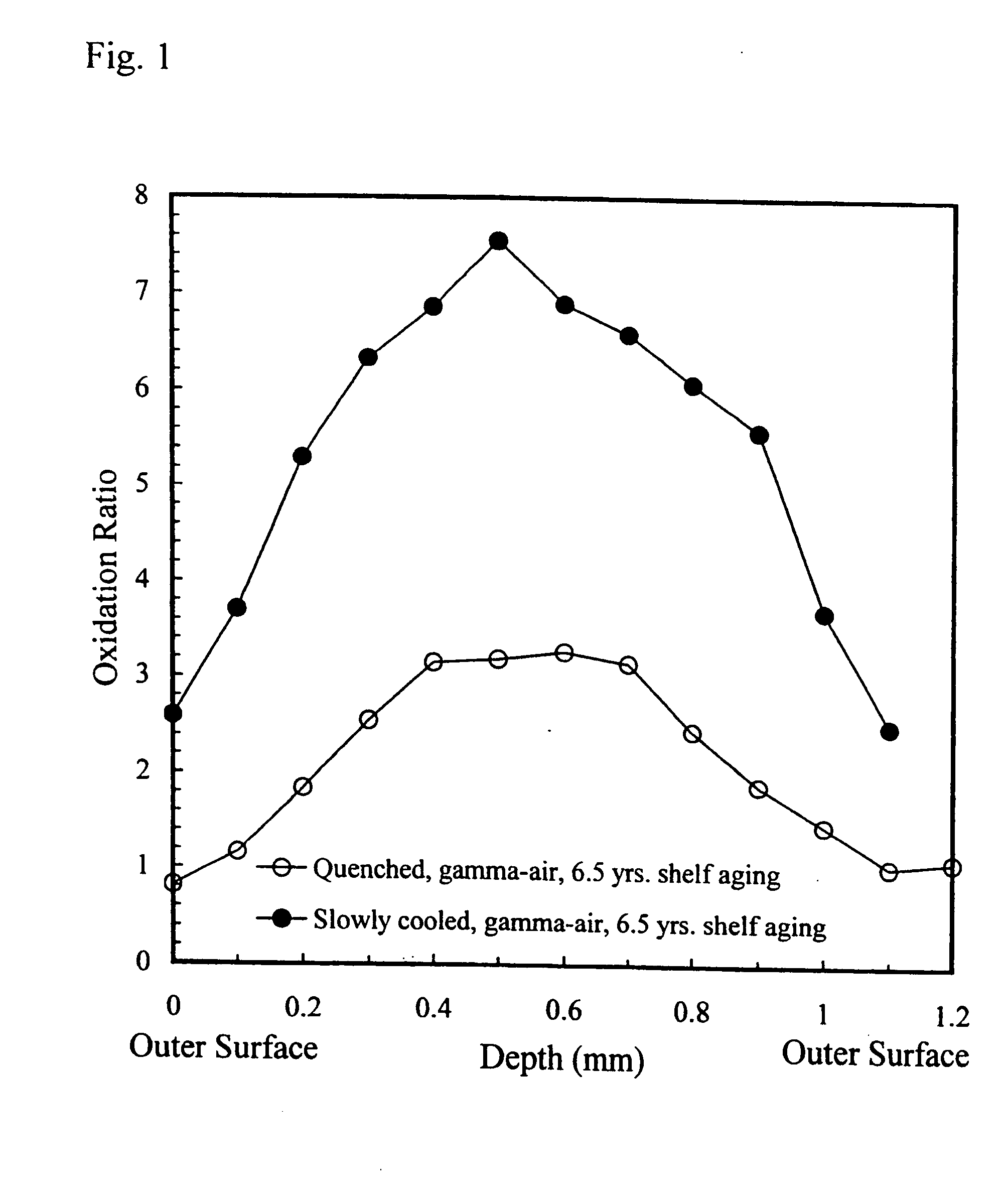Oxidation-resistant and wear-resistant polyethylenes for human joint replacements and methods for making them
a technology of polyethylene and human joint, applied in the field of polyethylenes, can solve the problems of oxidation due to open-air gamma-irradiation sterilization of uhmwpe components, affecting the performance of artificial knee joints, and introducing many microscopic wear particles into surrounding tissues, etc., to achieve uniform pressure and temperature, improve wear resistance, and improve the effect of wear resistan
- Summary
- Abstract
- Description
- Claims
- Application Information
AI Technical Summary
Benefits of technology
Problems solved by technology
Method used
Image
Examples
example 1
Oxidation of Gamma-irradiated Ultra-high Molecular Weight Polyethylene
Method and Materials
[0080] Original powder of medical-grade UHMWPE, GUR 415 (Hoechst, Tex., USA), with a weight-average molecular weight of approximately 6×106, was used as received. Specimens were compression molded according to the following procedures. The original powder of UHMWPE was placed in a 1 mm thick circular mold (5 centimeter inside diameter) between two stainless steel plates that were covered with aluminum foil. The press was pre-heated to 170° C. and then the UHMWPE was compression molded for two hours at 170° C. and a ram pressure of 7.5 MPa applied on the mold and polyethylene. After two hours, the pressure was increased to 15 MPa and the specimen was slowly cooled in the press to room temperature.
[0081] Alternatively, for the quench-crystallized UHMWPE, the molten specimen that had been molded at 170° C. and a ram pressure of 7.5 MPa for two hours was removed from the press and very rapidly ...
PUM
| Property | Measurement | Unit |
|---|---|---|
| compression pressure | aaaaa | aaaaa |
| compression pressure | aaaaa | aaaaa |
| pressure | aaaaa | aaaaa |
Abstract
Description
Claims
Application Information
 Login to View More
Login to View More - R&D
- Intellectual Property
- Life Sciences
- Materials
- Tech Scout
- Unparalleled Data Quality
- Higher Quality Content
- 60% Fewer Hallucinations
Browse by: Latest US Patents, China's latest patents, Technical Efficacy Thesaurus, Application Domain, Technology Topic, Popular Technical Reports.
© 2025 PatSnap. All rights reserved.Legal|Privacy policy|Modern Slavery Act Transparency Statement|Sitemap|About US| Contact US: help@patsnap.com


